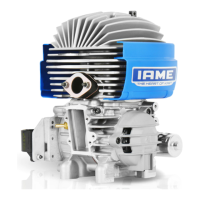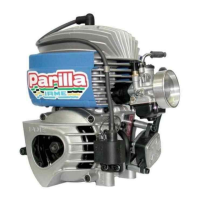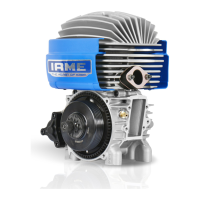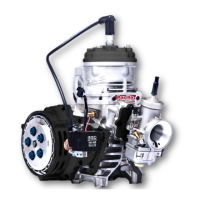14 –SPARK-PLUG THERMAL DEGREE
The engine is supplied with a standard NGK BR10EG spark plug which represents a
good compromise between the needs of a good break-in and the racing needs in
normal conditions.
Use of different spark plugs is possibile and, as a general information, we are
attaching a correspondence list among spark plugs of other brands, based on
thermal degree, which represents the capacity of the spark plug to dissipate the
internal heat. The colour of the various parts of the spark plug more exposed to the
combustion flames gives a good indication on the adequacy of the thermal degree
and on the carburetion. It is necessary though to understand which of the two
parameters has to be changed and only the experience tells how to identify the most
proper thermal degree of a spark plug as lean or rich mixtures can generate the
same final look which can be also achieved with a hot or cold spark plug.
See table:
an excessively warm spark plug shows the
symptoms listed aside.
ATTENTION:
Always use a warmer than standard spark
plug with cold or rainy climates
Extremely clear color, porous look and calcification of
the electrodes and of the internal insulation.
Irregularities in the ignition, preignition and
detonation with tendency to perforate the top of the
piston .
Note: some of these symptoms can be achieved
with lean mixtures.
A correct thermal degree shows:
Color of the insulator end from yellow grey to dark
brown for mixtures respectively lean or rich.
An excessively cold spark plug shows the
symptoms, listed aside.
ATTENTION:
Always use a colder than standard spark
plug with hot climates.
Insultator end and electrodes covered with black
shady soot.
Ignition difficulties.
Note: a wet or oily electrode could also mean an
excessively rich mixture.
COMPARISON TABLE BASED ON
THE THERMAL DEGREE
HOT
COLD

